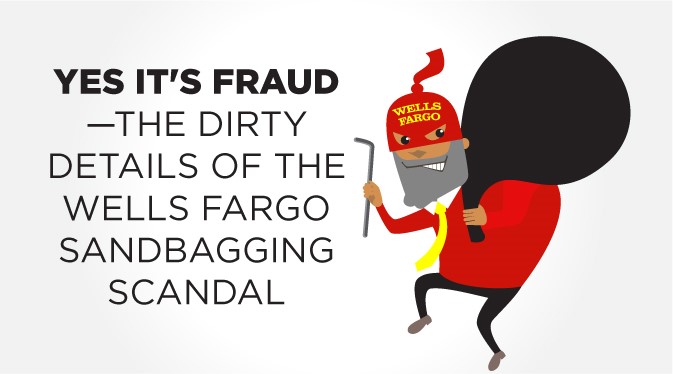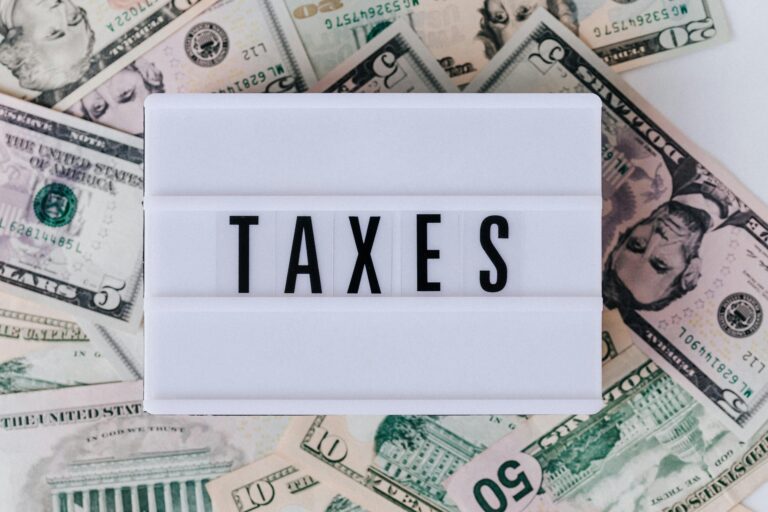Here are the facts about Wells Fargo scandal. Over the past 5 years, more than 5,300 Wells Fargo employees opened several million customer accounts without those customers’ knowledge. As many as 2 million deposit and credit card accounts had fraudulently been opened by employees over a 4-year period. Let’s simplify. They opened a ton of accounts under current customer’s names and didn’t tell them. We call that identity theft—they call that aggressive sales tactics.
How did this scenario get so out of control? First, it’s important to realize that banks are selling you something. When a bank receives a deposit from you, it’s on their books as a liability, because they need to lend it out the money to make money. Quite literally, banks borrow from us and use it to make more money.
Employees’ sales goals and bonuses are directly tied to pushing “products” like additional accounts and credit cards. Essentially, it became normal to open a few extra accounts for customers who didn’t know—likely people who don’t really use credit cards but have excellent credit ratings—unfortunately, probably many of them seniors.
Eventually people started getting charged fees from these accounts. Oops. It was out of control, and they were caught.
It’s Fraud
This practice has been around a long time. It’s called sandbagging, and Wells Fargo has known about this for a while. When they started needing cash 2010 and 2011 to satisfy the wolves of Wall Street, it got worse and worse and became a widespread practice. And they didn’t just wake up one morning and fire 5,300 people, the firings happened over the last several years. They were fined $185 million and will pay a $5 million refund to customers. To us that seems like a huge amount of money, but with their trillions in assets it is a mere slap on the wrist. Other banks likely have similar practices going on, but even if Wells Fargo isn’t the only bank doing this, it’s still fraud.
You’re Killing Banks
In getting to the bottom of why this happened we have to look at the current banking industry. See, because so many of us got burned in the recession, we’re saving more and spending less. This is bad for banks. When they take on the liability of your cash, they need to get it off the books. To offset this liability they issue credit. They want to sell you a credit card so they can make money on your money, because when you are in debt, you’re an asset to them. On the flip side, the smarter people are about getting out of debt, the less money the banks make. In short; our good judgment about living within our means is killing banks.
Stock Market Response
With all of this scandal, Wells Fargo’s stock price should be through the floor, right? Nope.
On September 9th when the announcement was made their stock price declined by about 12%. When the dust started to settle a few weeks later, the stock price rebounded back to where it was. Why? Because the public has been conditioned to open a 401(k) and have people invest money for us. We place our trust in them, so money was blindly being put back into their stock because they are still a “strong” company. The losses from the scandal are nothing compared to the broader income that the company generates. In essence, they dodged a market bullet. The “auto-pilot investing” model skirted a huge problem for stockholders, but absolutely demonstrates the volatility of the market. Now ask yourself where your retirement savings is.
So what happened to Carrie Tolstedt, the scapegoat Senior Executive blamed for orchestrating the fraud? Did she do jail time? No. Did she get fired? No. She “took the fall” by taking an early retirement with a $125 million-dollar compensation package. Why is all of this swept under the rug? For the same reason it’s becoming more and more difficult to hold money and withdraw money at banks . . . they don’t want a run.
What’s our ultimate lesson from all of this? Looking at the incredible imbalance on the scales of justice for Wall Street and big banks, who ultimately pays the price? The public—through taxes, inflation, and volatile markets—while these institutions play with people’s retirement portfolios. It may be time to find a more stable place to save for retirement.
Our mission at Paradigm Life is to show you a better way to grow wealth, manage finances, and save for retirement. We want to share a strategy with you called Infinite Banking, and we are excited to invite you to take 2 minutes to sign up for a FREE, extensive eCourse called Infinite 101®. You’ll receive access to video tutorials, articles, and podcasts. It literally costs you nothing to become educated on this ideal financial strategy and start changing your wealth paradigm!
Take advantage of this FREE resource by clicking below.









